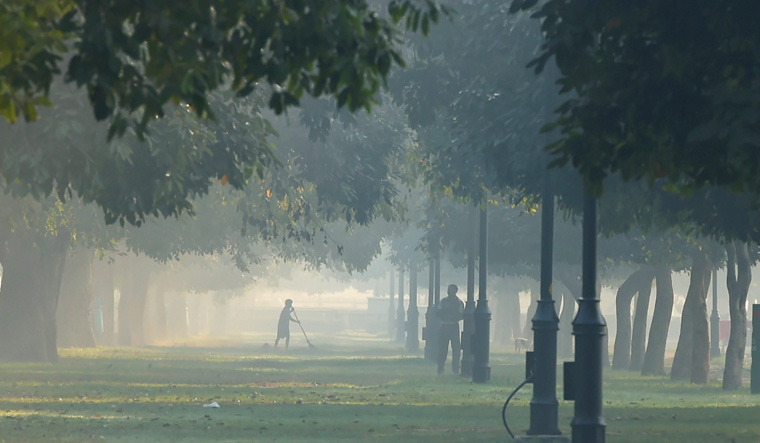Delhi's air quality remained very poor for the fourth day on Saturday with five areas of the national capital recording severe pollution levels, as authorities warned the situation may deteriorate further next week due to localised emissions during the Diwali festival and stubble burning by farmers.
The Central Pollution Control Board recorded the overall air quality index of Delhi at 341. The highest AQI of this season was recorded on Friday at 361.
On Saturday, five areas in Delhi recorded severe pollution levels. They are Anand Vihar, Dwarka Sector 8, Narela, Punjabi Bagh and Rohini. Punjabi Bagh recorded the highest pollution level in the national capital at 434.
An AQI between 0 and 50 is considered 'good', 51 and 100 'satisfactory', 101 and 200 'moderate', 201 and 300 'poor', 301 and 400 'very poor' and 401 and 500 'severe'.
According to the data by the state-run System of Air Quality Forecasting and Research, the overall air quality index of Delhi would deteriorate in a few days, remaining just points below the severe category.
The CPCB-led task force has recommended stringent measures from November 1 to 10, predicting further deterioration in the air quality ahead of Diwali.
Some of these recommendations include shutdown of coal and biomass factories, intensification of inspection by the transport department to check polluting vehicles and controlling traffic congestion in Delhi-NCR during November 1-10.
Authorities have issued an advisory, asking people to avoid strenuous outdoor activities and minimise use of private vehicles.
The task force warned that at the beginning of November, the situation may further deteriorate on account of localised emissions during the Diwali festival and regional contribution due to stubble burning.
The PM2.5 (presence of particles in the air with a diameter of less than 2.5 micrometres) was recorded at 179. The PM10 level (presence of particles in the air with a diameter of less than 10 micrometres) in Delhi stood at 321, according to the data from the SAFAR.
The PM2.5, also called 'fine particulates', can be a matter of more serious health concern than PM10.


